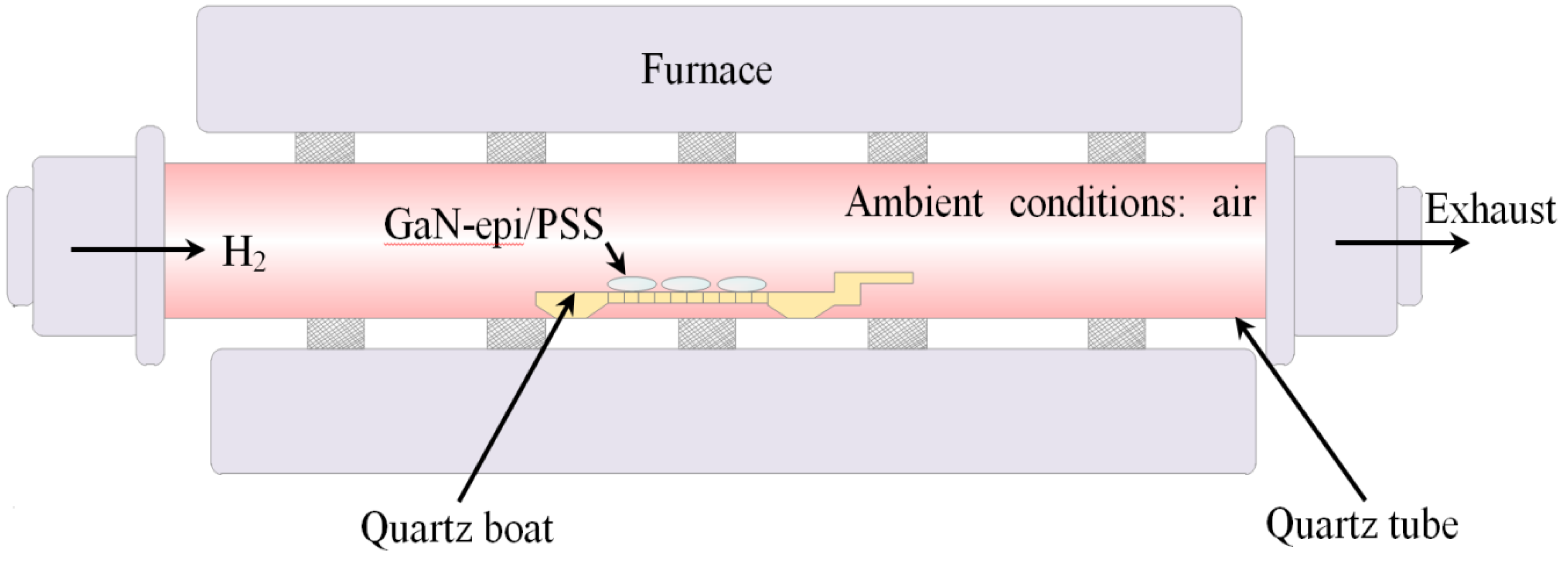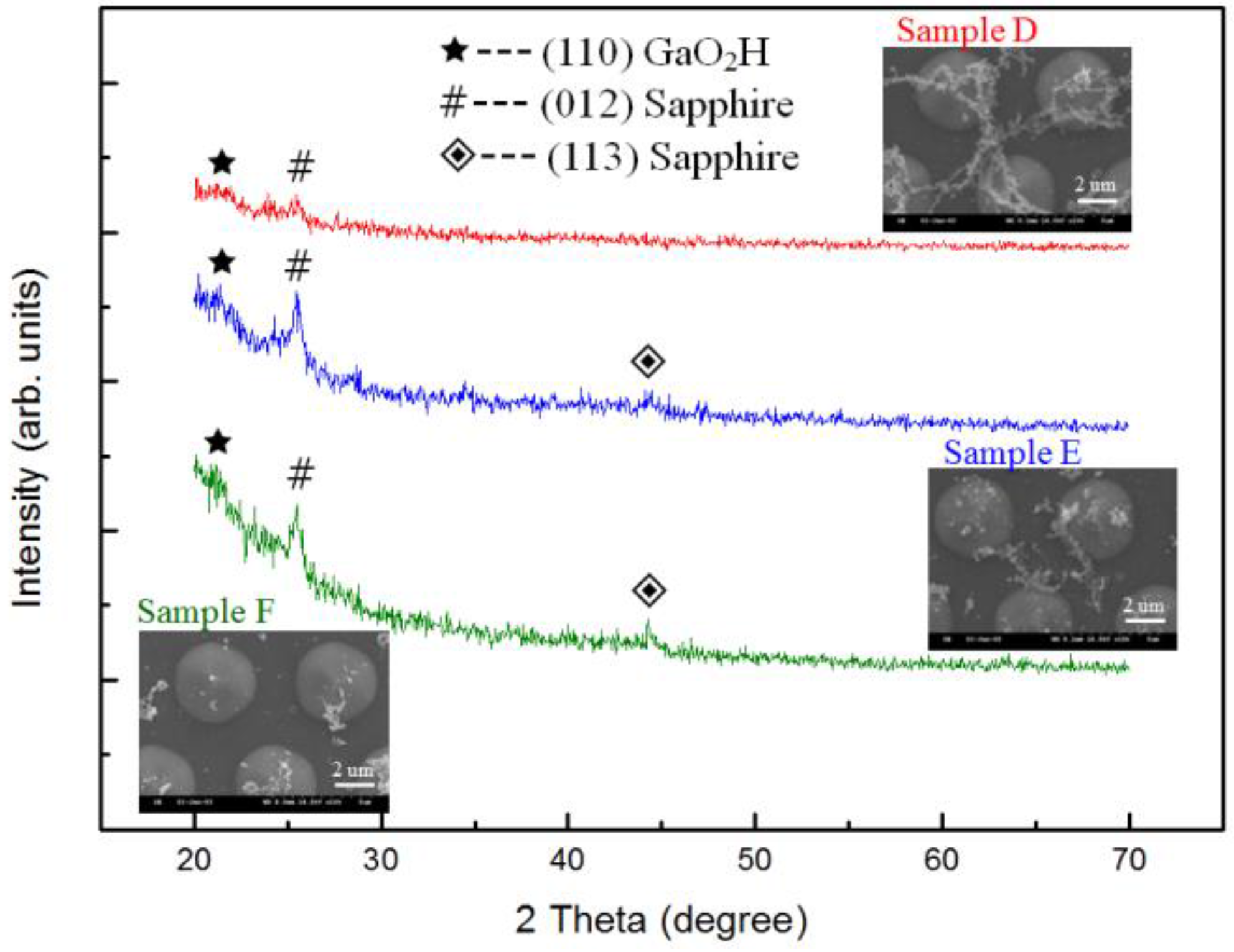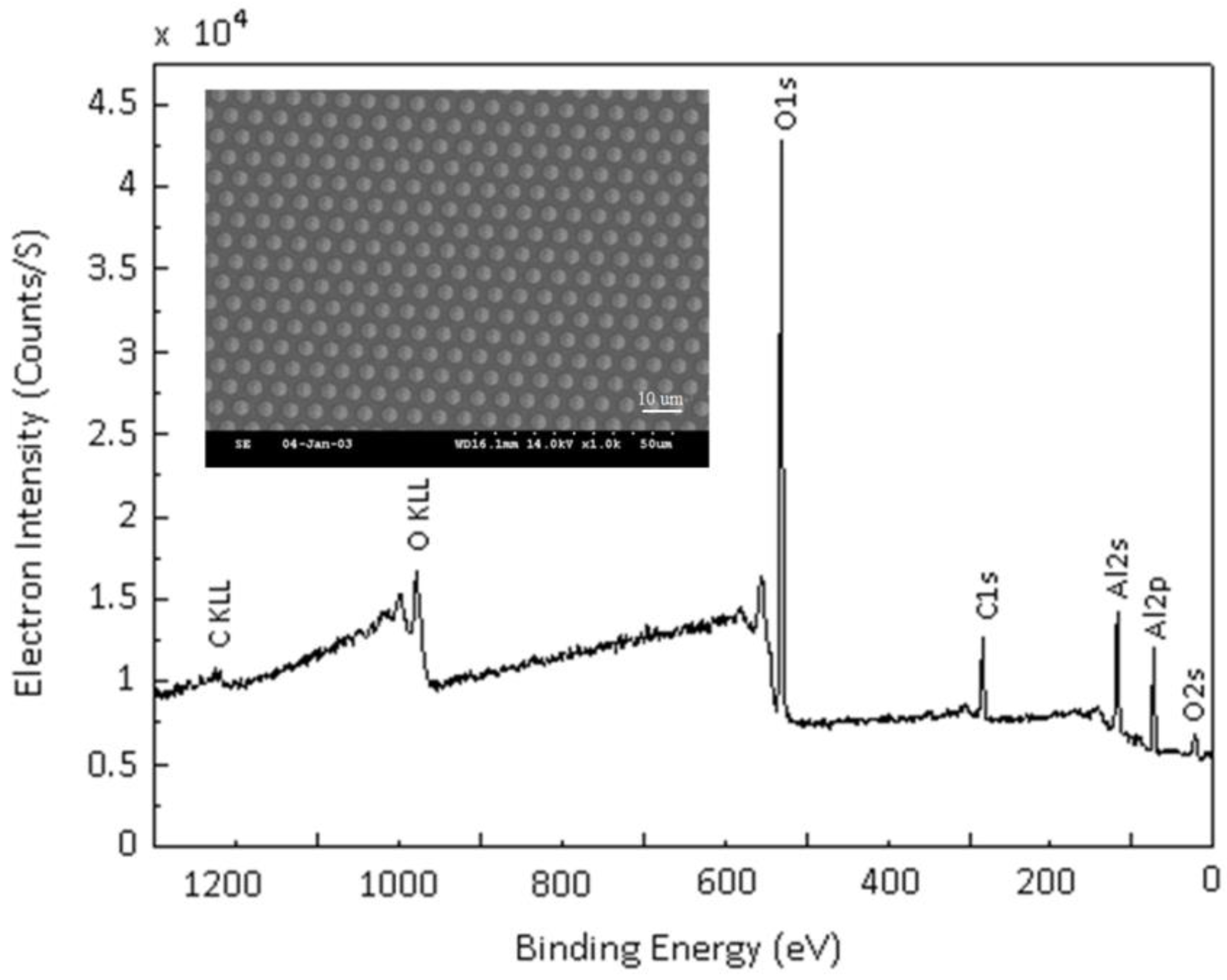A Substrate-Reclamation Technology for GaN-Based Lighting-Emitting Diodes Wafer
Abstract
:1. Introduction
2. Experimental Section
3. Results and Discussion
4. Conclusions
Acknowledgments
Author Contributions
Conflicts of Interest
References
- Muramoto, Y.; Kimura, M.; Nouda, S. Development and future of ultraviolet light-emitting diodes: UV-LED will replace the UV lamp. Semicond. Sci. Technol. 2014, 29, 084004. [Google Scholar] [CrossRef]
- Park, J.; Sin, Y.G.; Kim, J.H.; Kim, J. Dependence of adhesion strength between GaN LEDs and sapphire substrate on power density of UV laser irradiation. Appl. Surf. Sci. 2016, 384, 353–359. [Google Scholar] [CrossRef]
- Vishwakarma, A.L.; Jayasimhadri, M. Significant enhancement in photoluminescent properties via flux assisted Eu3+ doped BaNb2O6 phosphor for white LEDs. J. Alloys Compd. 2016, 683, 379–386. [Google Scholar] [CrossRef]
- Han, M.; Han, N.; Jung, E.; Ryu, B.D.; Ko, K.B.; Cuong, T.V.; Kim, H.; Kim, J.K.; Hong, C.H. Effect of curved graphene oxide in a GaN light-emitting-diode for improving heat dissipation with a patterned sapphire substrate. Semicond. Sci. Technol. 2016, 31, 085010. [Google Scholar] [CrossRef]
- Lee, F.W.; Ke, W.C.; Cheng, C.H.; Liao, B.W.; Chen, W.K. Influence of different aspect ratios on the structural and electrical properties of GaN thin films grown on nanoscale-patterned sapphire substrates. Appl. Surf. Sci. 2016, 375, 223–229. [Google Scholar] [CrossRef]
- Shang, L.; Zhai, G.M.; Mei, F.H.; Jia, W.; Yu, C.Y.; Liu, X.G.; Xu, B.S. The effect of nucleation layer thickness on the structural evolution and crystal quality of bulk GaN grown by a two-step process on cone-patterned sapphire substrate. J. Cryst. Growth 2016, 442, 89–94. [Google Scholar] [CrossRef]
- Global Sapphire and LED Chip Market Report. Available online: http://www.ledinside.com/newsletter/1568 (accessed on 30 June 2016).
- Zhang, Z.F.; Liu, W.L.; Song, Z.T.; Hu, X.K. Two-Step Chemical Mechanical Polishing of Sapphire Substrate. J. Electrochem. 2010, 157, H688–H691. [Google Scholar] [CrossRef]
- Yan, W.X.; Zhang, Z.F.; Guo, X.H.; Liu, W.L.; Song, Z.T. The Effect of pH on Sapphire Chemical Mechanical Polishing. ECS J. Solid State Sci. Technol. 2015, 4, P108–P111. [Google Scholar] [CrossRef]
- Zhang, Y.; Lin, B.; Li, Z.C. An Overview of Recent Advances in Chemical Mechanical Polishing (CMP) of Sapphire Substrates. ECS Trans. 2013, 52, 495–500. [Google Scholar] [CrossRef]
- Unland, J.; Onderka, B.; Davydov, A.; Schmid-Fetzer, R. Thermodynamics and phase stability in the Ga-M system. J. Cryst. Growth 2003, 256, 33–51. [Google Scholar] [CrossRef]
- Koleske, D.D.; Wickenden, A.E.; Henry, R.L.; Culbertson, J.C.; Twigg, M.E. GaN decomposition in H2 and N2 at NOVPE temperatures and pressures. J. Cryst. Growth 2003, 33, 466–483. [Google Scholar]
- Fu, Q.; Wagner, T.; Ryhle, M. Hydroxylated a-Al2O3 (0001) surfaces and metal/a-Al2O3 (0001) interfaces. Surf. Sci. 2006, 600, 4870–4877. [Google Scholar] [CrossRef]
- Wagner, C.; Riggs, W.; Davis, L.; Moulder, J. Handbook of X-ray Photoelectron Spectroscopy; Perkin-Elmer Corporation: New York, NY, USA, 1979; pp. 54–55. [Google Scholar]






| Sample: GaN-epi/PSSs Experimental Conditions | Temperature/°C | Gas-Flow Rates/sccm | Times/min |
|---|---|---|---|
| I. Processes under different temperatures | |||
| Sample A | 800 | 10 | 30 |
| Sample B | 1000 | ||
| Sample C | 1200 | ||
| II. Processes under different times | |||
| Sample D | 1200 | 25 | 30 |
| Sample E | 60 | ||
| Sample F | 90 | ||
© 2017 by the authors. Licensee MDPI, Basel, Switzerland. This article is an open access article distributed under the terms and conditions of the Creative Commons Attribution (CC BY) license (http://creativecommons.org/licenses/by/4.0/).
Share and Cite
Huang, S.-Y.; Lin, P.-J. A Substrate-Reclamation Technology for GaN-Based Lighting-Emitting Diodes Wafer. Appl. Sci. 2017, 7, 325. https://doi.org/10.3390/app7040325
Huang S-Y, Lin P-J. A Substrate-Reclamation Technology for GaN-Based Lighting-Emitting Diodes Wafer. Applied Sciences. 2017; 7(4):325. https://doi.org/10.3390/app7040325
Chicago/Turabian StyleHuang, Shih-Yung, and Po-Jung Lin. 2017. "A Substrate-Reclamation Technology for GaN-Based Lighting-Emitting Diodes Wafer" Applied Sciences 7, no. 4: 325. https://doi.org/10.3390/app7040325





